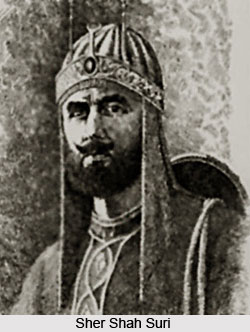 Administration under Sher Shah Suri is regarded as one of the best during the medieval period. It constituted of an effective working of the central and provincial administration. Sher Shah concentrated all administrative powers in his own person. He practiced the Turkish theory of kingship in his administrative matters because he knew that the Afghan theory of kingship was not workable in India. Sher Shah`s administration can be divided into central and provincial administration.
Administration under Sher Shah Suri is regarded as one of the best during the medieval period. It constituted of an effective working of the central and provincial administration. Sher Shah concentrated all administrative powers in his own person. He practiced the Turkish theory of kingship in his administrative matters because he knew that the Afghan theory of kingship was not workable in India. Sher Shah`s administration can be divided into central and provincial administration.
In the central administration all the powers were concentrated in Sher Shah`s hand. His ministers enjoyed even less powers as compared with the ministers of the Mughals. All major decisions were taken by Sher Shah himself and the ministers and the nobles simply carried them out. There were departments whose administrate heads enjoyed the position of ministers such as the Diwan-i-wazirat where the head of this department was the wazir, the finance minister who looked after the income and expenditure of the state. The Diwan-i-arz department was under the Arz-i-Mumalii who was the army minister. He was not the commander-in-chief of the army but looked after the recruitment, organisation, discipline, disbursement of the salaries of the soldiers and officers. The Diwan-i-rasalat department was in charge of the foreign minister of the state. He received foreign envoys and ambassadors and maintained correspondence with the foreign state. The head of the department Diwan-i-insha was called Dabir-i-Khas who looked after the internal correspondence of the state.
Besides these ministers, there were two other important departments of the state whose heads were not ministers but enjoyed consideration from the Sultan. The one was the Diwan-i-Qaza whose head was the chief Qazi. The chief Qazi was the head of the administration of justice only next to the Sultan. The other was Diwan-i-Barid which was presided over by the head of the intelligence department. He looked after the news writers and spies of the state who were posted at important places in the empire.
Very little is known about the provincial administration of Sher Shah. There were Subas where military governors were appointed by Sher Shah. There were provinces called the Iqtas where military governors or Subedars were appointed. Subedars were appointed in Lahore, Malwa and Ajmer. The entire Suba was divided into Sarkars (districts), each being looked after by a military officer called the chief Shiqdar. Above all chief Shiqdars there was appointed a civilian officer with a small military force to supervise the administration f the province. Thus there was no military governor in Bengal and there was no other officer commanding a sufficiently large force so as to be in a position to revolt against the Sultan. Thus, there was no uniformity in the administration of provinces during the reign of Sher Shah. But all provinces were kept under strict discipline by Sher Shah and there occurred no revolt by any provincial governor except that in 1541 A.D. in Bengal which was quickly suppressed by the Sultan. Each Sarkar was divided into smaller units called the Parganas. There was a Shiqdar (military officer), Munsif (Civilian Judge) and two Karkuns (clerks or writers) in each Pargana.
Sher Shah left the administration of villages in the hands of their hereditary officers like Chaukidars, Patwaris etc. The village assembly also enjoyed a large measure of independence in looking after the welfare of the people. All of them assisted state officials in collecting revenue and maintaining law and order. Sher Shah introduced the system of transferring the officers to the Sarkars and Parganas every two or three years. Thus during the reign of Sher Shah, administration was at its best.



















